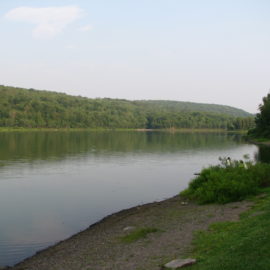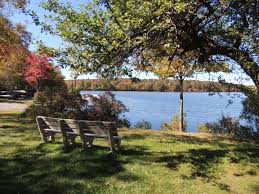Disclosure: I may earn affiliate revenue or commissions if you purchase products from links on my website. The prospect of compensation does not influence what I write about or how my posts are structured. The vast majority of articles on my website do not contain any affiliate links.
One debate in the running world that we can never quite put to rest is whether it’s acceptable to run in a graveyard. When debated on Reddit or LetsRun or even at a local Turkey Trot, there’s never a satisfactory conclusion. The same points end up getting raised; people seem to agree that it is highly dependent on the burial ground. Then, we find ourselves debating the finer points. Is it lawful? Is it socially acceptable? What are the mitigating factors? Regardless of the other points, are you infringing on religious customs?
I’m going to try to answer all of these questions based on my own experiences and the opinions that I’ve distilled over the years.
What are the Benefits of Graveyard Running?
If you feel uncomfortable and you have better alternatives, you’re not going to run in a cemetery. This begs the question: why do people so often wonder if it’s okay to prance around these solemn grounds?
Generally, graveyards have excellent snow, ice, and leaf removal. The grass must be cut regularly so there are fewer insects and other annoyances. Roads are wide and well-maintained while being clear of traditional street crossings, fast-moving traffic, and any thru-traffic at all. Safety is a major aspect. Graveyards are usually quiet, shaded, and are often placed around the edges of town. They almost always provide more space than modern parks while containing terrain that would have been awful for development but is preferred by runners. Rolling hills in cemeteries are quite common in Northeast Pennsylvania, where I grew up.
Among other fringe benefits is that cemeteries almost always will have a functioning water spigot somewhere. On desperately hot days, this can be useful, though … well … I wouldn’t exactly be in a hurry to drink water from the water table of a cemetery. It’s also common that unused areas of a cemetery may contain wide open fields or dirt roads and that they may link to other trails in the immediate area.
Is it Against the Law?
Nobody has ever been removed from a cemetery in handcuffs for running. However, there are a few important considerations here. Many cemeteries are privately owned but sell, or have sold, burial plots to the general public. Some are municipal. Some are privately owned and are intended only for a family or bloodline. Some are effectively abandoned without known/accessible owners. In the first or second case, the public could have a reasonable expectation of access to the cemetery but would be required to follow that cemetery’s policies.
Just like you could be charged for trespassing in a “public” park or museum, the same thing applies to cemeteries. If you’re inside the grounds after hours, are being a nuisance, or are generally violating a stated or implied policy, there is–absolutely–a legal basis for you to be asked to leave. The police could be called to enforce it. It’s awkward enough to find yourself getting yelled at by a groundskeeper or mourner–I think that’s what most of us are trying to prevent.
Ultimately, any laws surrounding this are handled at the state level. Would it form an intriguing legal case to be banned from entering a cemetery in which a direct relative is buried or in which you yourself own burial plots? Yes, absolutely. But there’s no reason to “know your rights” or attempt to stiff-arm a caretaker just because you want to run or walk your dog. Local policy is going to override everything else, and you are going to be the asshole in 100% of the cases where you assert your right to be there.
In the case of a private or abandoned cemetery which itself might be easy to access, there is no legal basis to cross private property in order to enter that burial ground. I doubt this would affect runners as much, but also be aware that access roads may fall into a grey area where they are actually owned by utility companies or private individuals rather than a municipal or graveyard owner.
Is it Socially Acceptable to Run in a Cemetery?
What I mean here is are there social or societal considerations? Beyond the legal argument, should you run in a cemetery?
If other people are recreating in the cemetery, you’re fine to run there! They are two guidelines I follow when running in a new place: The Dog Axiom and the Sub-7-Minute-Mile Axiom. [I’ll create standalone articles eventually]. Beyond those, there are a few reasonable considerations that I’ll provide my thoughts on.
The Dog Axiom
Anywhere where a dog is allowed, you can run. If a dog is in a park, you can run in that park. You can run as fast as you want and you can even take your shirt off. Dog allowed in a store? Same thing! You can run in that store if you feel like it. This is a universal rule. There is no place you can take a dog and have it be socially acceptable where you wouldn’t be able to run.
I find it reprehensible that someone would take a pet for a walk in a graveyard. Especially, with any regularity. In urban areas, dogs tend to oversaturate desirable outdoor spaces with feces and urine. To place this same burden on a graveyard, unless you’re bringing a beloved animal to see its owner, is inconsiderate. However, I admit that I have seen stories claiming dogs can “smell” their owners from the grave, which is plausible, so I fully accept this method of paying respects.
The Sub-7-Minute-Mile Axiom
This tends to be more controversial but if you’re sustaining a running pace that takes you through each mile in under seven minutes, there’s … almost … no such thing as trespassing. Nobody is going to catch you, most people aren’t going to even see you for prolonged periods of time. You’re not there to sightsee, you’re there to run. Certain pace thresholds demand respect, as self-absorbed as this sounds. This is much more applicable when alone since a pack of runners speeding along could be extremely disruptive. While I still would consider this if I was on the fence about running in a cemetery, there are quite a few other considerations.
What if there is an Active Service?
Depending on the size of the cemetery, this overrides any other rule. If you could be easily seen or could reasonably interrupt the traffic flow of a funeral procession, leave the cemetery as quickly as possible.
If there’s a small service or a group of mourners, you should avoid them. Cemeteries are a special place for mourning and reflection. Your behavior should reflect this as well.
What About Taking Your Shirt Off?
Being bare-chested as a man or running in a sports bra as a woman will invite unwanted attention. Though it’s usually the most comfortable, functional option, showing more skin is considered inappropriate on religious grounds. There was a story many years ago where a male runner was kicked out of the gym at the University of Scranton (a Jesuit school) for wearing split shorts. For what it’s worth, at my high school (also Jesuit) we were also strongly discouraged from running shirtless near school grounds.
You can make the argument that there is a standard for decency in a graveyard. Even since I was a kid, our social standards and views on sexuality have changed. There are double standards here that are uncomfortable to discuss at length. More experienced runners, male and female, will tend to wear tighter, shorter garments while running. If it’s tight and revealing, it’s probably inappropriate for a cemetery during mainstream hours.
What About Workouts and Spitting?
Okay, so if you can run in a cemetery, can you do a workout there? Is it appropriate to run sprints or hard-charging workouts? My guidance is, generally, anything faster than a tempo run should not occur in a cemetery. Anything that will push your stride outside of a natural cadence or will cause your breathing to become more labored is not appropriate. If anybody could look at you at any point in time and use an adjective associated with death to describe you, you shouldn’t be in a cemetery.
“Spitting” is not a typo for splitting. All runners have some approach to habitual spitting. You shouldn’t ever spit in a cemetery as a matter of respect.
Pathing & Proximity
This will vary between different areas, but you need to maintain social awareness of where you are. You don’t want to disturb others and you also don’t want to cause damage either to gravesites or landscaping.
When I talk about pathing, I mean you should stay on the main road. If the main road gives way to gravel or any other surface that will cause you to produce more noise, you must make a judgment regarding how close you will be to people mourning. Being in a sad, reflective, vulnerable state and hearing a runner ripping down a gravel path can be jarring. You need to consider that a graveyard is usually not a very familiar place for someone looking to pay their respects. They might come once a year or once a month, they might not know where they’re going. It’s a solitary activity and you should never give the impression that you treat it as a playground.
Special care should be taken on the meandering paths in a graveyard and they generally should not be run on at all. Further, any walkway or access road that brings you close to gravestones, even ones that look abandoned, should be treated with special care. This brings me to the next section.
How Much Noise is Acceptable?
None. You shouldn’t make any noise aside from light respiration and footstrike. You shouldn’t be speaking to anyone, whether they’re right next to you or on the phone. You shouldn’t have music playing openly. If your presence is a distraction to others or detracts from the tranquility of the space, get your ass out of there. If you are ever in a position where you have to call out “on your left!” when you are passing another person,
The “Old” Cemetery
Every large cemetery is going to have an old section where there are no active services, no empty plots, and visitors mainly there for recreation or historical purposes rather than mourning someone they knew. In the United States, this type of thing will tend to fan out from areas where certain religions were prominent when the country was founded. Near my hometown of Scranton, Pennsylvania, the Dunmore Cemetery is a large graveyard where the main road loops take you past well-established gravesites. I don’t think I’ve ever run there on a weekend and I never encountered a live service, but it was, easily, the best place to run in the winter due to how well maintained the roads were and how socially acceptable it was to recreate in the main areas.
There were certain areas in this cemetery (actually, a different cemetery that is conjoined) that were so old that they were grown in and hidden. Again, you’re not going to find any empty plots or active services in these areas, but this is something that’s learned over a long period of time.
Conclusion: Proceed, Respectfully
In snowy places and more dense urban areas that don’t have sufficient greenspace, graveyards can be the best places to run. It’s important to be aware of your surroundings. The good news if you’re the type of person to search this type of topic, and actually read the whole thing, you probably have the requisite empathy for spending time in a graveyard. Thanks for reading and let me know what you think below.



